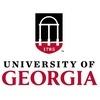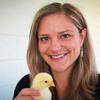Explore all the information on
Poultry management
Poultry management usually refers to the husbandry practices or production techniques that help to maximize the efficiency of production. Sound management practices are very essential to optimize production. Scientific poultry management aims at maximizing returns with minimum investment. A carefully controlled environment that avoids crowding, chilling, overheating, or frightening is almost universal in poultry farming. Cannibalism, which expresses itself as toe picking, feather picking, and tail picking, is controlled by debeaking at one day of age and by other management practices. The feeding, watering, egg gathering, and cleaning operations are highly mechanized. Birds are usually housed in wire cages with two or three animals per cage, depending on the species and breed, and three or four tiers of cages superposed to save space. Cages for egg-laying birds have been found to increase production, lower mortality, reduce cannibalism, lower feeding requirements, reduce diseases and parasites, improve culling, and reduce both space and labour requirements.
Diseases are produced by micro-organisms which are universal and single organisms reproduce and multiply number of times. Disease incidences are higher in old and densely populated poultry farms. Bio-security is of immense help to reduce disease hazards and improve health and productivity of birds. Optimum and profitable poultry production can be achieved by reducing disease risk to minimum extent. Bio-security literally means safety...
Comments : 10
Recommendations: 0
INTRODUCTION Housing systems and mating strategies have become a global focus of concern as these are being referred one of the most cogent factors in overall performance of broiler parent stock (PS) in progressive poultry (Whitehead et al., 2016). Hence, now a days, the scientists are striving to probe the exact impact of keeping place of birds on their productive and reproductive performance. Despite of many advantages and disadvantages, two housing systems i.e., floor and...
Comments : 0
Recommendations: 0
High pressure sodium (HPS) lights have been used in broiler-breeder houses for decades due to their very high lumen output. The typical 150-watt HPS fixture produces approximately 16,000 lumens of light which is 16 times the amount of light produced by a 75-watt incandescent light bulb. The downside of HPS lighting systems is that in order to...
Comments : 0
Recommendations: 0
Dust found in poultry housing is a complex substance most likely comprised of a mixture of excreta, feather, feed and bedding material. Exposure to poultry dust can impair the health of both poultry and poultry farmworkers as it serves as a medium for survival and spread of pathogenic microorganisms and inhalation of respirable particles and toxins (Just et al. 2009; Viegas et al. 2013). It has also proven useful as a population level sample material for tracking pathogen incidence and...
Comments : 0
Recommendations: 0


New Generation of Water-Soluble Probiotics to Alleviate Gut Health Challenge During Feed Transition Period in Broiler Production
Suggested link
Hugo Romero Sanchez, Ph.D., Executive Global Poultry Solutions Manager at Novus International, highlights some nutritional strategies to enhance or recover male breeders’ fertility...
Comments : 0
Recommendations: 1
Introduction Globally, the poultry sector is a sizeable industry with a current market value of $ 310.7 billion and is expected to grow at a compound annual growth rate (CAGR) of 3.8% 1 . Poultry is a rapidly growing agricultural sub-sector in developing countries 2 , however, product quality, safety, and avian diseases continue to be a major challenge to this industry 3 . Hatcheries occupy a focal position in the poultry production chain,...
Comments : 0
Recommendations: 0
I. INTRODUCTION In accepting the invitation to present a paper on laying hen welfare at APSS 2021, I thought that I would provide an overview of a special issue of Animal Production Science on layer hen welfare that will be published in early 2021. This special issue consists of 19 review papers on the welfare implications of: the production system; development, growth and production; husbandry and behaviour; and health. I had planned to report on the main findings of the...
Comments : 0
Recommendations: 0
Broiler welfare assurance programs specify the standards that producers must follow to sell their broilers, receive a premium, and/or a certification label on their products. Broiler assurance programs differ in the guidelines and audit standards that producers must follow because the missions and goals of each organization...
Comments : 0
Recommendations: 0
Identifying individual birds that are suffering or that have compromised health and welfare is key to maintaining high standards of poultry care. Knowing your birds and when they are ill or in pain is imperative for identifying birds that need treatment or that might need to be euthanized....
Comments : 0
Recommendations: 0
It is very important to have good uniformity in broilers to maximize the performance. Variation in their body weights causes lot of complications and problems. If the flock is not uniform, it will take longer time to grow and many rejections at slaughter house. Different type of enteric and other diseases can easily disturb the flock resulting in severe economic losses. FCR is badly affected by unevenness in a flock and the result is less profitability. If the...
Comments : 5
Recommendations: 3
Compromised leg health is a welfare and economic concern for meat chickens. Enrichment of the production environment via the provision of perches has been a focal point of research into reducing the prevalence of leg disorders in recent years. Despite inconsistent evidence of the effect of perches (Groves and Muir 2013; Phibbs et al. 2019), they are provided in almost two thirds of the Australian meat chicken industry, with 2.7 m perch/1000 birds required under the RSPCA Approved Farming...
Comments : 0
Recommendations: 0
by Sam Shafer
Higher stocking density linked to lower body weight and weight gain, but is total antioxidant capacity the culprit?
Poultry scientists have found that a goose’s performance is closely tied to their housing conditions. But while there are several studies linking high stocking density to health problems in geese, research is lacking when it comes to the actual physiological drivers behind...
Comments : 0
Recommendations: 0
Radio Frequency Identification (RFID) technology has been used for animal behaviour and welfare research, to monitor animal location and resource utilization. The aim of this study was to develop and validate an in-house custom built ultra-high frequency (UHF) RFID system to be used on a commercial free-range egg farm with three-tier aviaries. The system was designed and constructed to detect hens in certain areas (feeders, nest boxes, range) within the housing system. Briefly, Speedway R420...
Comments : 0
Recommendations: 0
1. Introduction In Pakistan, the poultry production sector in the form of eggs and meat is playing a pivotal role in bridging the gap between the supply and demand of animal protein. Presently this sector is producing 1681.64 metric tonnes of meat and 16,797 million eggs and these figures are in a constant increase [1]. Previously, egg production was limited to the backyard poultry, where desi hens having little potential for this very economical trait were used. The addition of...
Comments : 0
Recommendations: 1
.jpg&w=3840&q=75)

Trends and challenges in Poultry Production: Jonathan Cade, President of Hy-Line International
Suggested link
The need to reduce heat stress and oxidative stress in poultry is crucial to maintain bird performance and optimal margins for farmers. Phileo’s experts discuss how to mitigates the detrimental effects of heat stress using premium quality yeast cell walls. J...
Comments : 4
Recommendations: 6
Jeroen Dewulf (Ghent University) talked about Biocheck, a risk-based scoring system developed to measure the level of biosecurity at animal farms, during IPVS2022 in Rio de Janeiro, Brazil....
Comments : 0
Recommendations: 1
The Poultry Research Foundation, in conjunction with WPSA -Australian Branch, cordially invites you to the 34th Australian Poultry Science Symposium at the Sheraton Grand Sydney Hyde Park.
The Australian Poultry Science Symposium is the premier avian science conference in Australia, attracting delegates from right across the country and around the world. This year our conference will focus on an over-arching theme of: “Global Volatility and Poultry Industry...
Comments : 0
Recommendations: 0
PSA interviewed Ken Macklin (Auburn University) to hear his insights regarding the COVID-19 pandemic's effects on the poultry industry and biosecurity measures in place. Let's Squawk About It is a monthly interview segment by the Poultry Science Association....
Comments : 2
Recommendations: 2
INTRODUCTION The Amazon rainforest is an important regulatory mechanism of the tropical atmosphere and its climate variation, performing important functions in the climate equilibrium of several ecosystems and their inhabitants. The region also has unique climate and environment characteristics (Fisch et al., 1998). The development of poultry production in the region thus presents several challenges related to birds’ environmental comfort, depending on the type of...
Comments : 0
Recommendations: 0
Join us one hour a week (June 2022 – August 2022) to connect with cutting-edge speakers and panelists. Contribute your insights and experiences! Your participation shapes the concepts that will fuel the Summit. Can’t attend all the webinars live? Each webinar builds towards the Summit and will be recorded so you can stay current. Stay connected and informed and participate in discussion boards to keep the weekly conversation going.
Then join us in person or virtually...
Comments : 3
Recommendations: 5






.jpg&w=3840&q=75)























